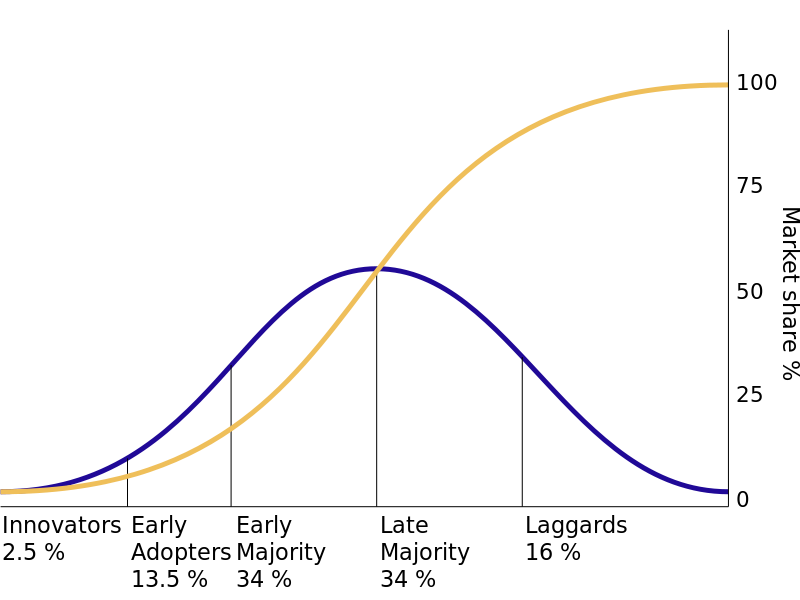Categories of Adopters
Although every adopter follows the same five stages described earlier, adopters’ reactions and behaviors during those stages differ. Some adopters move faster than others, and some may need more information than others.
Diffusion of innovation has described the categories of adopters in great detail, and empirically studied the size of each category in any given social system.
The individuals in a social system do not all adopt an innovation at the same time. Rather, in an over-time sequence, so that individuals can be classified into adopter categories on the basis of when they first begin using a new idea. There is a term for it, and it is; the degree of “innovativeness”.
Innovativeness: the degree to which an individual (or other unit of adoption) is relatively earlier in adopting new ideas than other members of a system.1
Rogers has divided adopters into categories: "innovators", "early adopters", "early majority", "late majority", and "laggards". Each category has common characteristics and behaves towards new innovations in a certain way. If you look at the below figure you will find that this categorization – backed by years of empirical studies - is falling under normal distribution, where most of the observations lay in the middle of the curve. Early majority and late majority combined accounts for 66% of the population of adopters (or potential adopters), and the common sense says that our focus in diffusion of any new innovation should be addressing those two categories because they represent the largest segment of our audience!1
However, a deep examination of the characteristics of each category might tell a different part of the story. The key benefit of this categorization is that each category of adopters acts as an influencer and reference group for the next.

1Rogers, E. M. (2003). Diffusion of innovations. New York: Free Press.
For more about this topic, download our latest book "How New Ideas Spread (Part 1)" for FREE:
